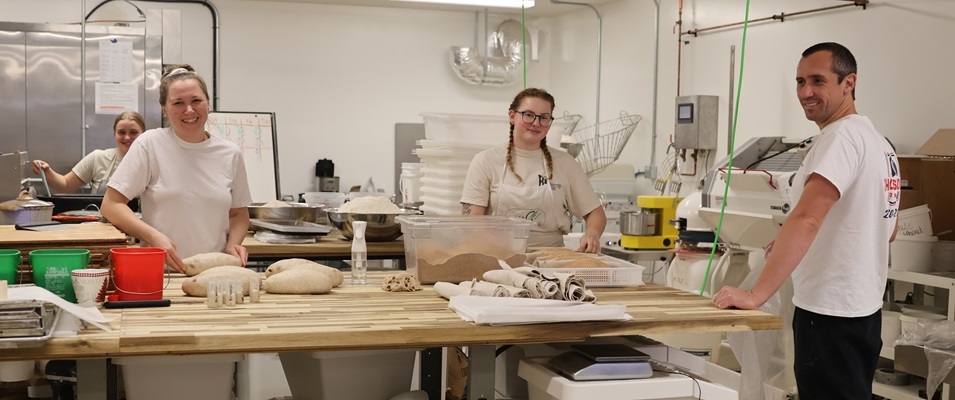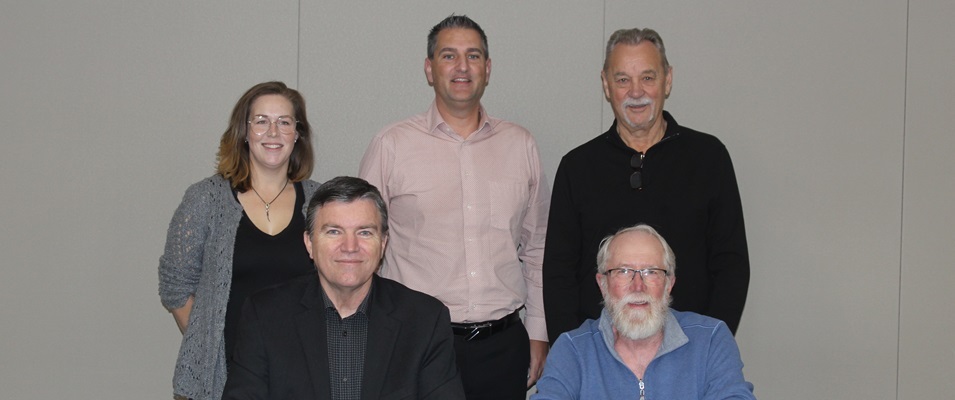
While many of us are familiar with the Crow Wing Trail (CWT), few are aware of the amount of effort and dedication that goes into its administration, maintenance, and promotion. Niverville residents Elena Borisova and Tomas Yebra Vega have signed on as the newest representatives of the trail and hope to encourage further awareness and active participation along its winding Manitoba route.
The CWT is 193 kilometres long and makes up one of the longest sections of the TransCanada Trail. Running from Emerson to Winnipeg, the trail takes a course through the municipalities of Emerson-Franklin, De Salaberry, and Ritchot, with sections crossing the Roseau River First Nation and the towns of St-Pierre-Jolys and Niverville.
The trail is known as Manitoba’s first “highway” and was used in the 1800s as the primary trade route between St. Paul, Minnesota, and Winnipeg. Supplies were transported north from the Crow Wing Settlement on the Mississippi River. Furs, pemmican, and native clothing moved south from the Red River Settlement.
This route also saw the conveyance of many new settlers to the Red River Valley in the late nineteenth century. Upon arrival in Canada, these pioneers often rode by train to St. Paul, where they were loaded, along with their meagre belongings, onto an ox cart for the slow and bumpy ride north.
The CWT Association was established in 1999 by a group of volunteers wishing to commemorate the route’s rich history. With the changing landscape—much of it now crisscrossed by highways, agricultural land, and private property—the trail has had to shift here and there to accommodate modern hikers. Scenic routes have been established through St-Pierre-Jolys, Otterburne, Niverville, and St. Adolphe, maximizing opportunities for tourism.
Ritchot Councillor Janine Boulanger is the CWT representative for her RM. She works alongside the Recreation and Public Works Departments to integrate loops, signage, and points of interest along St. Adolphe’s portion of the trail. Lesley Gaudry, Ritchot’s community economic development officer, has supported the CWT Association by applying to the government for historical highway status.
Niverville is also an active member of the CWT Association, providing representatives for the CWT board and creating historical signage along the trail’s path through Hespeler Park and past the Niverville Heritage Gardens.
When Libby Hanna recently gave up her position on the CWT board, Borisova and Vega stepped in to replace her.
“For us, we came into this because we love the outdoors and activities that involve exercise,” says Vega. “[But] it’s not only about promoting exercise. It’s also about teaching the history and the nature of the environment.”
The couple enjoy an active life of walking, biking, snowshoeing, cross-country skiing, and canoeing. During the week, they work together at a Winnipeg firm as electrical engineers. This is also where they met, having immigrated to Canada only a few years ago. Borisova hails from Moscow, Russia while Vega left his home in Ponferrada, Spain.
Ponferrada, he notes, lies 200 kilometres from Santiago de Compostela, the destination for thousands of pilgrims who walk the Camino de Santiago every year. His home city is one of many along the Camino to enjoy the wealth of economic benefits brought in by pilgrims from around the world. The tourists benefit as well, celebrating along with locals their history and cultural traditions.
“Any trail on the Camino is a treasure for the communities and the towns that are on it,” Vega says. “They know how to take advantage of everything that the Camino offers.”
Vega imagines that a similar benefit is possible for the towns along the CWT. Accreditation for completing sections of the trail, he says, is one way that the association may one day recognize and encourage people to use the trail. Continuing to promote the trail to tourists, running and cycling groups, clubs, and organizations is another.
On the Camino, people walk for a variety of reasons. For some it’s a spiritual pilgrimage, while for others it’s a physical challenge of endurance. Whatever the purpose, Vega says, one thing is inevitable: the establishing of relationships with complete strangers over a common goal.
“This contact with human beings and sharing the same experience, it transforms you,” says Vega. “This is what people value, although they don’t realize it. That can happen anywhere you walk. You don’t need anything special except for special people walking.”
While the Camino sets a high standard for successful tourism, it requires a lot of ingenuity and effort.
“I think that [replicating the idea of the Camino] would be wonderful, but you have to have a lot of money and people involved in that,” says Vega. “First, people have to see the value in this. There is an education component. If you think that this tourist attraction is valuable for your town, then you will invest in it.”
Vega and Borisova have witnessed great enthusiasm and vision among the CWT board members, but their funding is limited to occasional government grants, memberships, and donations. Trail maintenance alone eats up a good portion of their budget. But the couple is excited to be a part of the vision and have been impressed with the level of maintenance and signage applied to the portions of the trail they’ve walked.
Actif Epica is an annual event that benefits from the CWT year after year. Every February, participants in this marathon come from as far away as California and race up to 200 kilometres. Their website describes it as a human-powered event, bringing communities together in celebration in a cold winter environment, demonstrating the strength of human ingenuity and the beauty of having fun whatever the temperature.
But the CWT isn’t just for extreme fitness enthusiasts. The association encourages anyone to come and walk in the footsteps of Manitoba’s early traders and pioneers. There are unlimited opportunities along the route for nature lovers, birders, artists, historians, photographers, cyclists, and explorers. According to CWT’s website, “the trail is as varied as the multicultural makeup of this region.”
“The trail is a living organism,” Vega says, citing the wide variety of plant and animal species he and Borisova have enjoyed while walking it. “It has changed, and it will continue to change.”


















